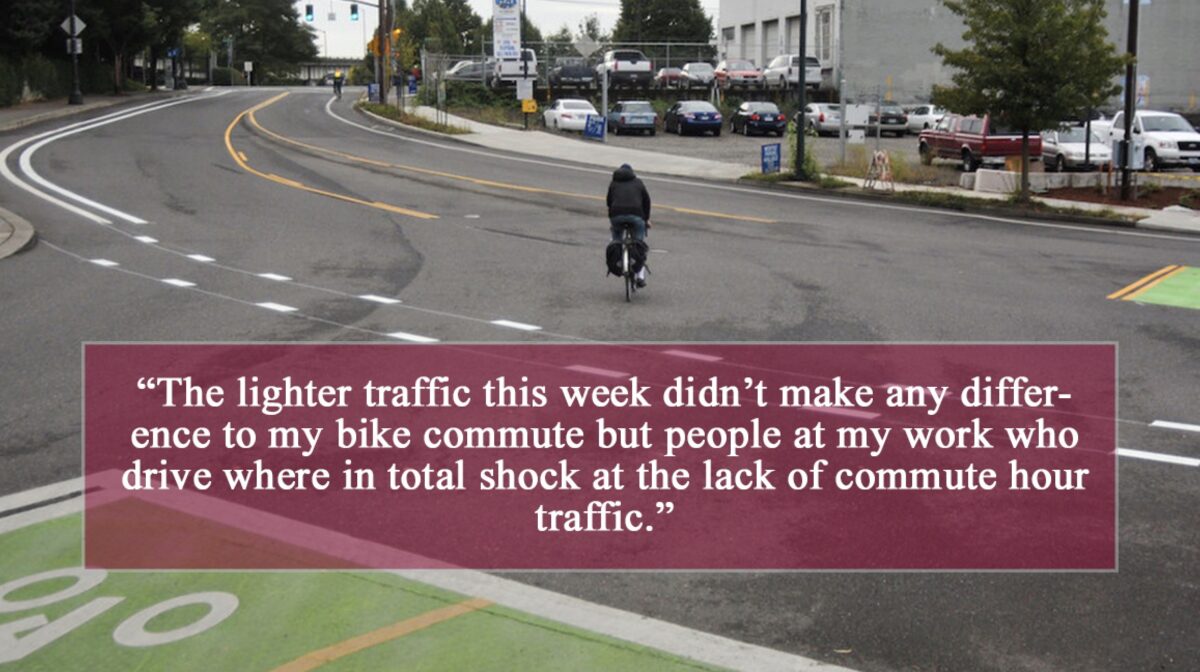
(Photo © J. Maus/BikePortland)
Portland’s streets are much quieter since scores of people have started working from home during the coronavirus outbreak.
On Friday, a reader named Tom shared a great comment about what this change in work habits means to our travel behaviors more broadly, and how it should inform our decision-making around managing congestion.
Here’s the comment:
“The lighter traffic this week didn’t make any difference to my bike commute but people at my work who drive where in total shock at the lack of commute hour traffic. Some people who just work at their computer and don’t really need to be on-site all the time where given the option to work at home some days, and I heard other companies were doing the same. Some were worried this might impact productivity, but actually it was a very productive week for the factory. If anything it seemed to improve productivity so far.
Advertisement
My point is that it only took a slight adjustment to allow select people to work from home some of the time to result in a drastic reduction in commute hour traffic, with no apparent downside. This demonstrates that the trillions we have spent locally on freeways over time is in large part to support the employer inflexibility of unnecessarily requiring everyone showing up at the exact same time when other options are available.
Congestion pricing if applied to commute hours may force some workers to ask their employers to allow them to shift their schedule but why not just just directly apply the pressure to medium and large size employers. Employers could be incentivized by a headcount congestion impact fee, that they could then get out of paying if they shifted a certain amount of workers at least slightly off 8 to 5, or allowed some workers to work from home a certain percent of time, or set up car pooling program for employees and demonstrate a increase in carpooling. The answer should not be widen, widen, widen, every time.”
Thanks for that Tom.
For a bit more context, the amount of people who work from home in Portland was already increasingly rapidly before the outbreak. The chart below (from a recent presentation by PBOT Bicycle Coordinator Roger Geller that I’ll share more about soon), compares U.S. Census mode share rates over time. Working from home has nearly doubled since 2002.

Remember, if you read a great comment and want it to be highlighted here, just reply to the comment with “comment of the week” so I can find it easily via search.
— Jonathan Maus: (503) 706-8804, @jonathan_maus on Twitter and jonathan@bikeportland.org
— Get our headlines delivered to your inbox.
— Support this independent community media outlet with a one-time contribution or monthly subscription.

